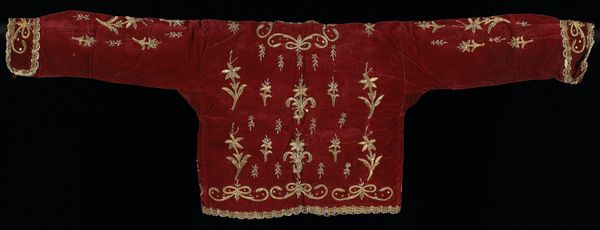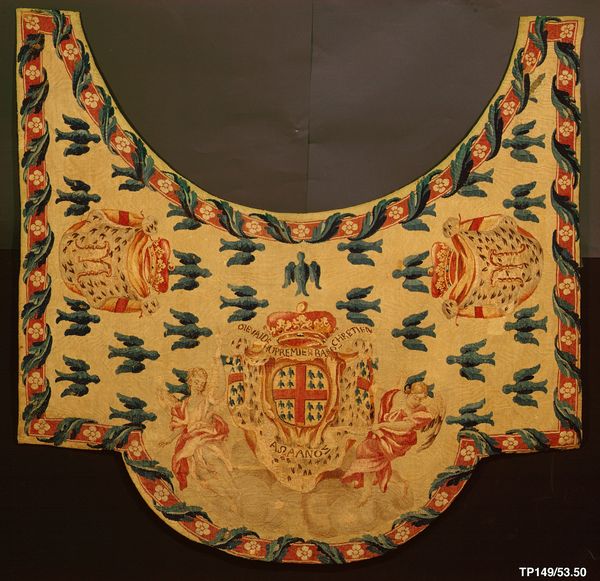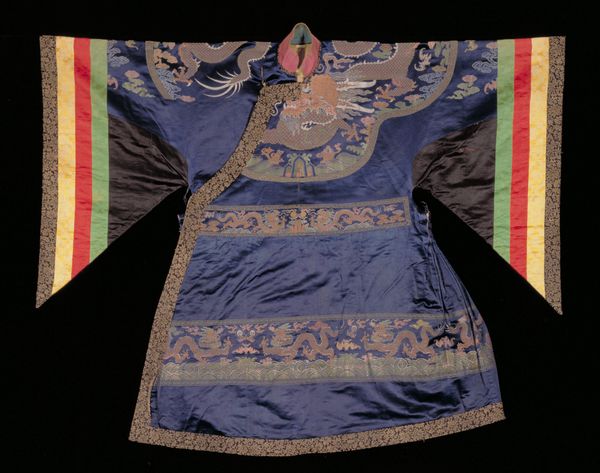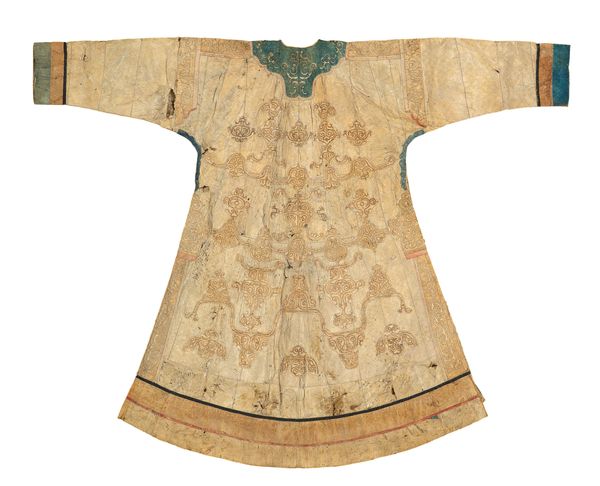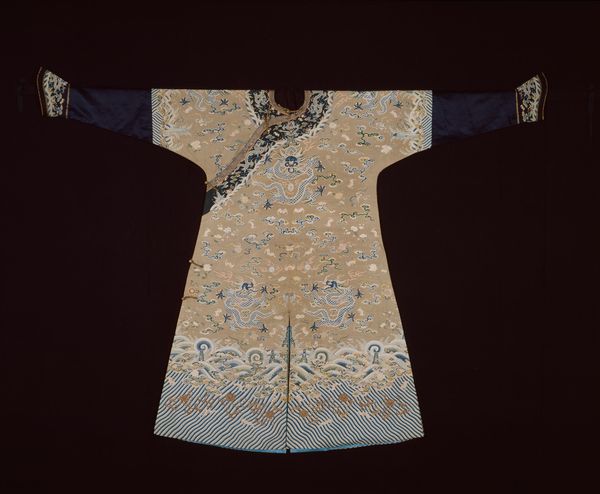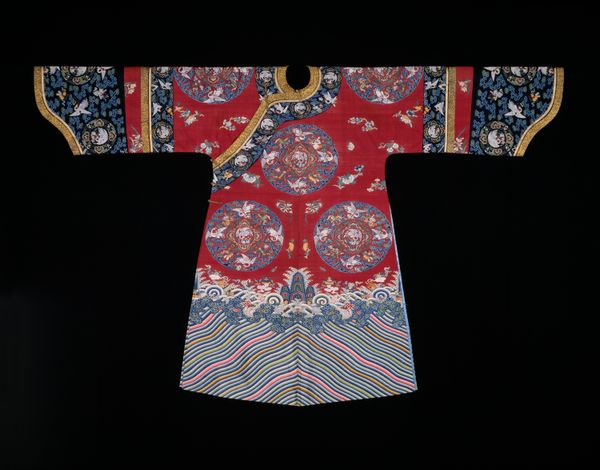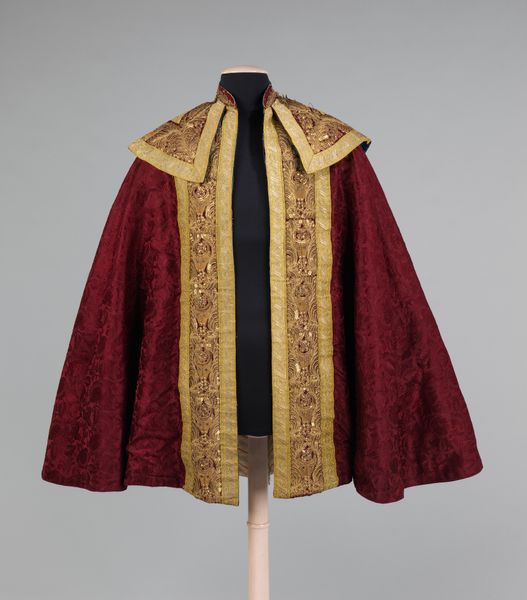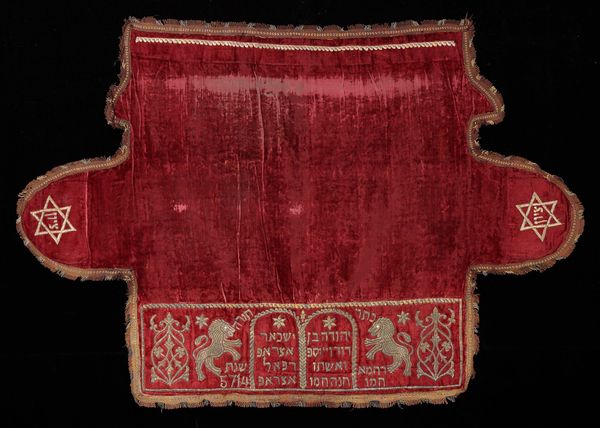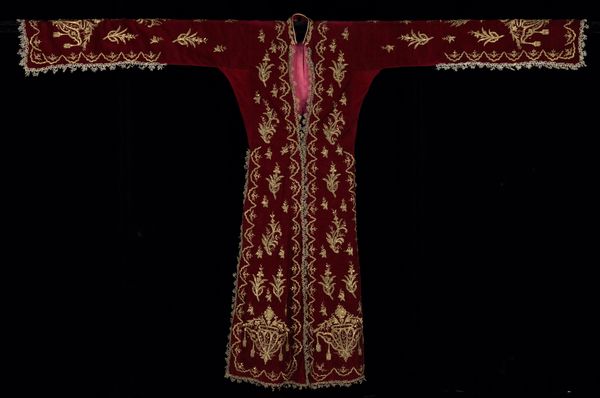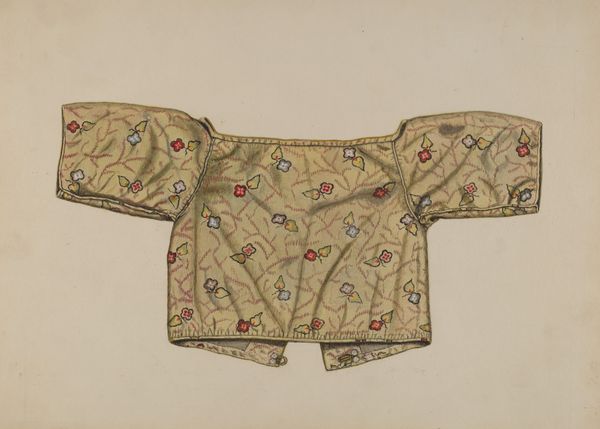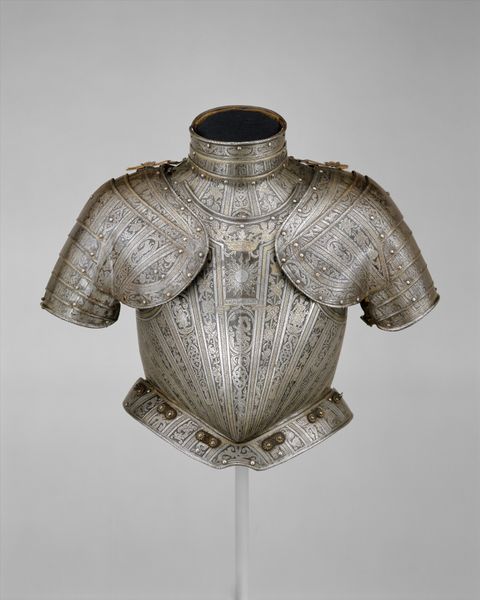
weaving, textile
#
baroque
#
weaving
#
textile
Dimensions: height 90 cm, width 130 cm, depth 21 cm
Copyright: Rijks Museum: Open Domain
Johan Pietersz. Smout embroidered this heraldic tunic for the House of Orange-Nassau, its symbols designed to speak volumes. Note the proliferation of lions, ancient symbols of courage, nobility, and royalty. These aren't mere decorations; they are a bold declaration of power and lineage. We see them rampant, guarding the shields, their manes bristling with symbolic energy. This motif echoes through time; think of the Lion Gate at Mycenae, the Lion of Saint Mark in Venice, and countless royal standards across Europe. The lions here, however, are distinct. They are not merely emblems of authority but carry the weight of Dutch identity and aspirations. This tunic goes beyond mere representation, engaging our subconscious through symbols that have resonated for centuries. The imagery acts as a powerful, non-verbal language, engaging viewers on a deep, subconscious level. The lion resurfaces, evolves, and takes on new meanings in different contexts, demonstrating its cyclical progression through time.
Comments
rijksmuseum about 2 years ago
⋮
No article of clothing could be more symbolic: the arms of Prince Frederick Hendrick of Orange-Nassau are embroidered on the front, back, and sleeves. This ‘heraldic tunic’ was made for his state funeral in Delft on 10 May 1647. It was carried in the procession to demonstrate the deceased’s status and rank. Four such tunics were worn by heralds, and a fifth, symbolizing the dead prince, was borne aloft on a pole.
Join the conversation
Join millions of artists and users on Artera today and experience the ultimate creative platform.
